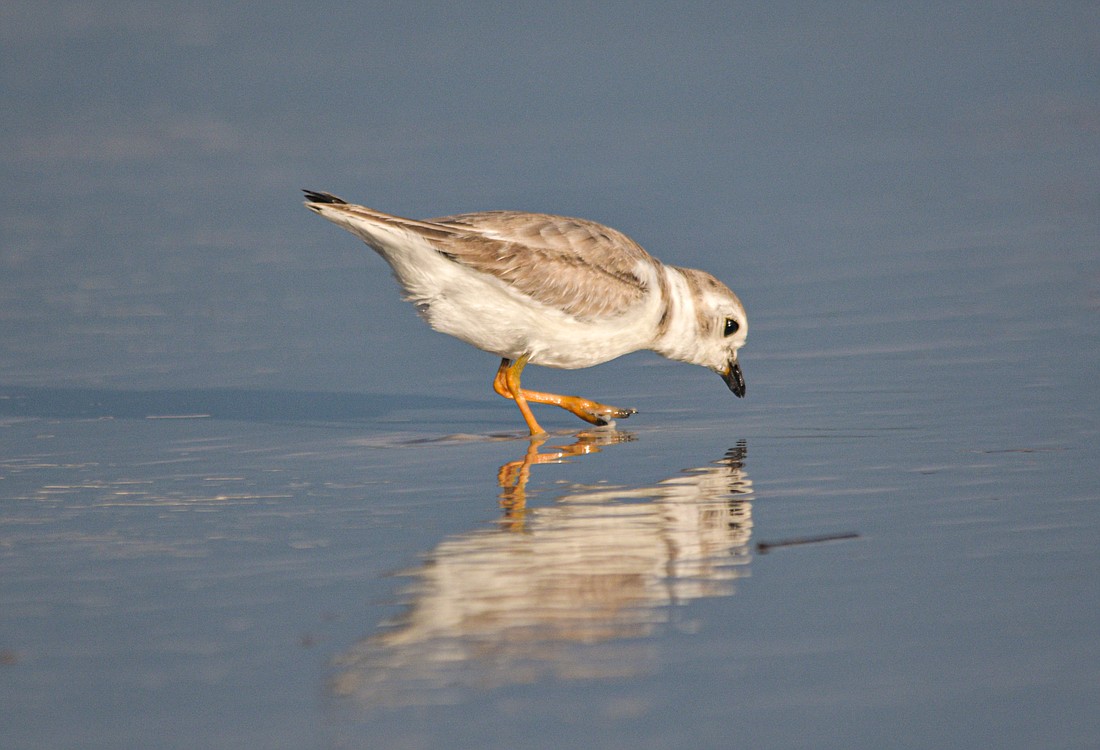- December 5, 2025
-
-
Loading

Loading

Piping plovers are small, migratory shorebirds. Their light sand-colored plumage blends in with beaches and sand flats, their primary habitat, as an adaptation protecting them from predators. At first glance, they look similar to their relatives, the snowy plovers. Look at their legs to tell them apart: Piping plover legs are yellow-orange. Though piping plovers do not breed in Florida, these “snow birds” spend a large portion of the year “wintering” here.
Nearly wiped out in the late 19th century because of hunting for the hat trade, piping plovers are still a species of great concern. Indeed, they have been listed as a federally threatened species since 1985, when there were less than 2,500 breeding pairs estimated in the United States and Canada. By 2017, U.S. Fish & Wildlife estimated the total breeding population of piping plovers had dropped to 1,899.
The main threat to piping plovers is habitat loss and degradation, due to coastal development, as they depend upon wide open, wild beaches for both their breeding and wintering habitats. Indeed, historical records indicate that wintering piping plovers have been forced from entire counties in Florida (including Sarasota) over the past 50 years.
Interestingly, in recent years, a high percentage of migrant and wintering piping plovers have been recorded in Florida's state park and preserve beaches. This highlights the importance of our undeveloped coastal parks to piping plovers and other shorebirds, and the need to continue to support these areas, and protect them from development.
By understanding that, even when not nesting, shorebirds need their space, and are extremely vulnerable to predators, such as crows, gulls, dogs and domestic cats we can also help, by reducing beach disruptions.
Save our Seabirds is a non-profit organization whose mission is to rescue and rehabilitate sick and injured birds, releasing as many as they can, while educating our community about avoiding injuries and preserving habitats.